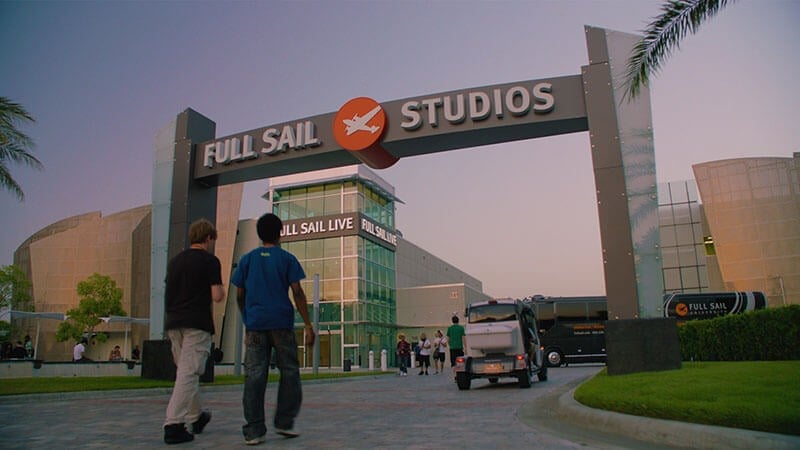Full Sail
What to Expect When Applying for A Nonimmigrant Visa
The decision to study abroad carries with it many considerations, both personal and practical. Among other things, incoming international students have to settle on a course of study, find a place to live, and tackle cultural adjustments that come with moving to a new country. And of course the journey doesn’t end after graduation—many grads choose to pursue a path to an extended stay in the U.S. in order to gain practical training in the job market. One of the biggest challenges facing international students and grads is learning to navigate the visa process.
Whether you’re a potential student interested in pursuing a career in entertainment and media, or a new grad looking to broaden your experience, Full Sail has a dedicated International team who can offer support throughout your time here. In order to further assist our students and grads, we’ve compiled a basic guide to applying for nonimmigrant visas before, during, and after graduation.
F-1 Visas
The most common type of student visa, F-1 status is granted to international students enrolled full time at an accredited college or university. The status covers those who are enrolled in academic degree programs, as well as those studying English as a Second Language.
To apply for F-1 status, you’ll need to provide proof of income stating that you’re able to pay for your degree program and living expenses. If you’re unable to prove financial ability on your own, a family member can provide proof of income on your behalf.
“We normally ask for bank statements to prove financial ability,” says Liliana Torres, an immigration attorney at Orlando based firm Colombo & Hurd. “If a student is being sponsored by their parents or a family member, then we normally draft an affidavit (a written statement of affirmation) indicating that person would be responsible for the student’s tuition and living and expenses.”
As an applicant, you’ll also need to provide sufficient evidence of ties to your home country, basically your intent to return to your country of origin after graduation. This is most commonly presented in the form of obligations related to property or business, the presence of dependent family members in the home country, or a even a job offer waiting for you upon completion of your degree.
Finally, you’ll sit down with a consular officer for a visa interview, where you’ll most likely be asked to elaborate on how the proposed coursework will benefit you once you return home. “The interviewer may also ask about your English ability, or any other question that seems pertinent to approve the visa,” says Liliana.
Because the interview will most likely be conducted in English, it may be beneficial to practice some of your answers ahead of time. Consider your proposed course of study and how it relates to your future. During the interview, answer each question honestly and try your best to remain relaxed. It's also important to remember to bring all of the necessary documents (these will vary from country to country), as well as all relevant admissions documents that prove acceptance into the institution of your choice.
Optional Practical Training
International students are not eligible for employment under basic F-1 status, but they do have the option of applying for Optional Practical Training (commonly known as OPT). OPT provides students and grads with open access to the job market, and it’s a great option for people looking to gain more experience or for those who want to pursue a path to an extended stay in the U.S.
Under OPT, grads are eligible to extend their visa status anywhere from three to 12 months in order to pursue practical training. Under an addendum passed by the U.S. Department of Homeland Security in 2008, students in qualifying STEM fields have the option of extending their OPT period to 17 months.
In order to qualify for OPT, you’ll have to meet a minimum of three key requirements. First, you’ll need to have spent at least one academic year enrolled in a full time degree program. You must also be in good academic standing, which means maintaining a grade point average of 2.0 or better for undergrads, or 3.0 or better for graduate students.
Second, your F-1 status must be current at the time of application. “Under the F-1 visa, students have 60 days upon completion of their degree to leave the United States. If they don’t leave within that time, this could cause problems for them in the future, especially if they try to apply for another visa,” says Liliana.
If you do think you want to extend your stay in the U.S., Liliana suggests applying early. Waiting until graduation might not give you enough lead time to land a job before your F-1 status expires.
Finally, the proposed job must be directly related to your major area of study. Because of this, it’s important to consider industry demand prior to choosing a degree program.
“Some fields might carry more opportunities than others,” says Liliana. If a student chooses a course of study that has a wider reach in the job market, they may have an easier time finding a job and qualifying for OPT as opposed to someone who opts for a more specialized route.
H1-B Visas
Speaking on a panel at last year’s Sixth Annual Hall of Fame Week, immigration attorney Henry Lim called OPT “the best vehicle” for international grads looking to extend their stay in the U.S., because it provides an opportunity to build relationships with local employers. This, in turn, increases the likelihood that a grad will find sponsorship when they apply for an H-1B visa.
An H-1B visa allows employers to temporarily hire international employees in specialty fields. H-1B status is good for three years, with the option to extend the status for up to six years in some cases. The number of available H-1B visas is limited, however, to just 65,000 per fiscal year. Because of high demand, it’s imperative that you start seeking sponsorship as soon you think you might wish to stay in the country beyond the OPT period. The fiscal year begins October 1, and companies are able to begin filing H-1B paperwork six months prior. Having your paperwork in order by April 1 will help speed the process along.
“The toughest part for [grads] is finding an employer who’s willing to go through the process to file [an H-1B]. Last year, of the 65,000 visas that were available, the government received 180,000 applications. So that puts you at around a 30-33% chance of being selected, even if you do qualify. This tends to have a chilling effect with employers, and they may be hesitant about hiring you if that’s your first contact with them,” said Henry. He went on to say that while the process of applying for an H-1B visa can be daunting, applicants shouldn’t feel discouraged. This is especially true for applicants who have established a good work ethic with potential sponsors.
“If you’ve had the opportunity to work with [a company] under OPT, and they like your work, then they’re a lot more likely to assist you with an H1-B. At least that’s been our experience.”
For more info on applying for visas both during and after graduation, watch the full video from last year’s Hall of Fame.
Whether you’re ready to apply or just want to learn more about Full Sail University, our Admissions Representatives are here to help. Call us or request more information.

